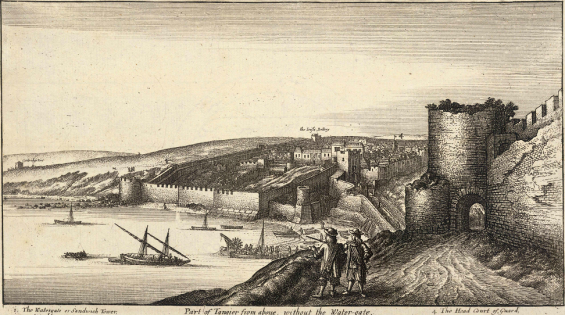During the 17th century, and while Morocco was going through an unstable political phase, a great warlord rose to fame. Khadir Ghailan or simply Guyland as the English used to call him, was a warrior who took control of northwestern Morocco as the rest of the country was disputed between other powers.
His thirst for power and great skills in battle made him an undefeatable commander, mostly known for his clashes with the Anglo-Irish garrison in Tangier.
Ghailan’s story started in 1643, when Tangier was undergoing major political changes. At the time, the city, which was previously occupied by the Portuguese but placed under Spanish control after the death of King Sebastien I of Portugal, was taken back by the Portuguese at a time when the Saadi dynasty was crumbling.
Ousting the Potuguese
The situation in northern Morocco encouraged local forces to consider ousting the invaders. Said forces were led by Mohamed Ben Ahmed Ayyachi, as well as Ali and Ahmed Ghailan.

The death of two fighters paved the way for al Khadir Ghailan, «son of Ali Ghailan, moqaddem of the holy war (...) for the region of Habt and the chief of the tribe of Beni-Gorfet», to take the lead of these fierce local forces, Tingis Aecid wrote.
After taking charge upon his father's demise during an attack against the Portuguese in Tangier, Lakhdar Ghailan took control of Ksar El Kebir, which he immediately transformed into a fortress and cradle of his movement.
He then embarked on a conquest to establish an emirate in northern Morocco. «In 1653, after victorious campaigns, he already dominated, in addition to the first tribes who pledged allegiance to him, the Fahs of Tangier, Asilah, Tetouan and their regions, as well as Ksar El Kebir», the same source added.
But he dreamed of recovering Tangier, thus making life difficult for the Portuguese, through several attacks. As a result, in 1656, the representative of the English crown in Tangier was forced to request a truce which lasted only one year. Said truce enabled Lakhdar Ghailan to assemble «a powerful army of 25,000 combatants who surrounded the city and cut off its water supply».
The Portuguese then tried to supply Tangier with ships sailing from Lisbon, but «fell into an ambush» set up by the maritime army of Ghailan which left from the coasts of Asilah. The Portuguese then finally let go, withdrawing from Tangier and handing over the keys of the city to Charles II of England in 1662. But Ghailan and his men made of this English colonial project a nightmare.
The English and Guyland
Indeed, «during the first three years of the English occupation, the forces of the local Moroccan leader (…) twice ambushed and massacred large contingents of British troops, considerably weakening English military capability and prestige in Tangier», Adam R. Beach wrote.
In details, Beach recalled in an article titled «Baffled Colonial Discourse : Representing the first decade of English Tangier» that «the colony faced significant pressure from powerful Moroccan armies, equipped with weapons fully comparable to those of Tangier’s English garrison».
Ghailan’s troops were indeed a force to be reckoned with for the English who were constantly harassed by their sudden and powerful attacks. Describing their efficiency, Enid M. G. Routh wrote in «Tangier, England's lost Atlantic outpost» that they «were estimated at seventeen thousand at least, and most of these were Berbers, mounted on little hill-ponies as hardy and untiring as their riders, who could be mobilised with extraordinary rapidity».

Despite his multiple attacks on English Tangier for several years, Ghailan, «whenever pressed by supply difficulties or other commitments (...) simply made valueless offers of peace and moved off from Tangier with his army».
In 1664, however, the warlord and his men besieged Tangier and defeated a detachment of the garrison of English Tangier led by Governor Andrew Rutherford, 1st Earl of Teviot, who was killed during the fight.
Fighting several battles, Ghailan’s ambitions were foiled by the rise of the Alaouite dynasty. In October 1673 near Ksar El Kebir, the army of Moulay Ismail defeated Ghailan and killed him.
Until 2014, Ghailan's Kelaa built by its namesake on the Atlantic coast of Tangier was a living example of Moroccan-led resistance against the Portuguese invasion. However, according to the Journal de Tanger, the fortified structure, abandoned for centuries, was destroyed, giving way to a private swimming pool.





 chargement...
chargement...













